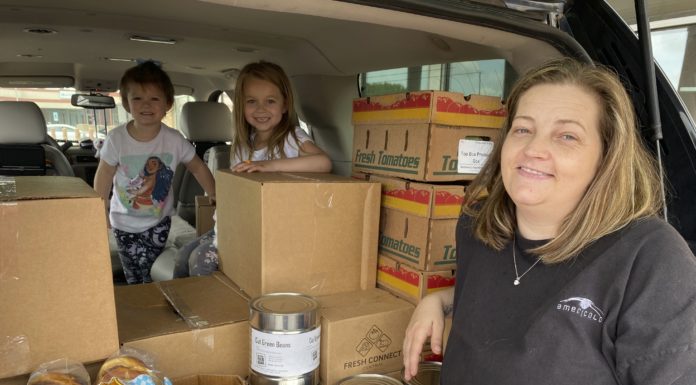Americans at the low end of the income rung are once again struggling to make ends meet.
A confluence of factors — the Ukrainian/Russian conflict, surging inflation on staples like gas and food, and a distressed supply chain — are creating new challenges for Americans.
Americans have pulled back faster than expected in the past two months. They’re focusing on necessities while turning to cheaper items or less expensive stores. And they’re buying only a little at a time.
We previously reported on the Fed’s inflation concerns last September. The Biden administration has since admitted that inflation has been “worse than expected.” They continue to blame Russian President Vladimir Putin for soaring prices.
Liberals and left-leaning organizations have suggested eating bugs and killing plants as methods to help cope with Biden’s soaring inflation.
It’s a reversal from Trump’s presidency when low-income shoppers, flush with money from a strong economy and buoyed by wage increases, were able to spend more freely.
Kisha Galvan, a 44-year-old mother of eight children from ages 9 to 27, was able to stock up on groceries for the week and buy extras like clothing and shoes at Walmart for her children last year.
But with inflation hovering at a near 40-year high, she is buying more canned food and depending on the local food pantry several times a week instead of once a week.
“I shop meal to meal,” said the Rockford, Illinois, resident who has lived on disability for the past 15 years. “Before, we didn’t have to worry about what we were going to get. We just go get it.”
Both Dollar Tree and Dollar General, which historically benefit from shoppers trading down during difficult economic times, raised their sales outlooks last month. Meanwhile, discounter Big Lots suffered steep sales declines in the latest quarter, noting cutbacks in items like furniture.
“We are now in a new chapter where high inflation is greatly limiting the ability of consumers to make discretionary purchases, especially of high ticket items,” Big Lots CEO and President Bruce K. Thorn told analysts late last month. “We know that many Americans now are once again living paycheck-to-paycheck.”
The pullback among low-income shoppers has not affected overall spending, which is still up. In April, the government said retail sales outpaced inflation for a fourth straight month, a reassuring sign that consumers — the primary drivers of America’s economy — are still providing vital support and helping ease concerns that a recession might be near.
But analysts believe even affluent shoppers could retrench if the stock market continues to weaken. Marshal Cohen, chief industry advisor at market research firm The NPD Group Inc., said the stock market affects higher income shoppers “psychologically” and more losses on paper could make them cut back.
The spending mood has shifted from last October and November, when the Fed conducted a survey and found that almost eight in 10 adults were either “doing okay or living comfortably” when it came to their finances in 2021, the highest proportion to say so since the survey began in 2013. For those earning less than $25,000, the proportion that said they were doing at least okay jumped to 53% from 40%.
But inflation has taken a bigger bite out of personal budgets and wiped away some of the wage gains, especially for those who earn less. The national average cost of a gallon of gas, for example, has jumped to $4.76 from $4.20 a month ago and a painful 56% from a year earlier, according to AAA.
At the Northern Illinois Food Bank, which feeds people in 13 counties including Galvan and her family, the average monthly number of visits grew to more than 400,000 in the February through April period, from 311,000 in the July through September period, according to president and CEO Julie Yurko.
Across the economy, median wages jumped 6% in April from a year earlier, according to the Federal Reserve Bank of Atlanta. But even though that was the largest increase since 1990, it was still below the inflation rate of 8.3%.
Meanwhile, the poorest one-fifth of Americans have exhausted the savings they’d built up during the pandemic in part through stimulus checks, child tax credit payments and higher wages, according to calculations by Jeffries, an investment bank. Americans’ bank accounts. The other four-fifths of U.S. households are still sitting on a large stockpile of additional savings since the pandemic, with much of that held by the top fifth.
The current environment is making it difficult for retailers to pass on higher costs. Macy’s, for instance, got pushback after raising prices on some casual clothing items and home accessories.
“We’re definitely seeing some balk at some of the prices,” Macy’s CEO Jeff Gennette recently told analysts on the company’s earnings call. “We’ve made adjustments there.”
For the Northern Illinois Food Bank — like many food banks — food costs are spiking amid dwindling donations.
“Inflation and rising food costs mean the food bank has to make tough choices about our budget,” Yurko said. ”What foods can we provide consistently and what foods can we only provide if they are donated to us?”
Adapted from reporting by the Associated Press.

